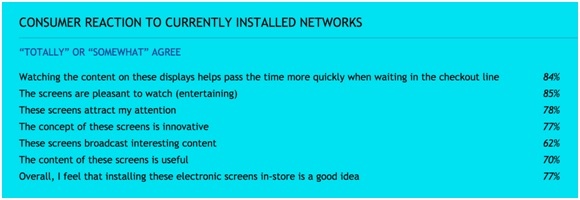Seth Godin was wrong.
He's famously quoted as saying something like, "Content marketing is all the marketing that's left." The statement traces to a 2008 teleseminar, as reported by Joe Pulizzi in an early post on Content Marketing Institute.
It wasn't true in 2008, and despite the explosive growth of the discipline since, it's not true today. (Sorry, Seth.)
He might have meant content marketing is the best, most practical, or most tactical marketing left. I'll buy that. I'll also concede it's caused a whole lot of marketers to reconsider their advertising and direct marketing budgets and strategies.
But try telling Apple or Samsung that advertising is now pushing up the daisies. Thanks to NBC's coverage of the Olympic Games in Rio, I logged more TV-watching time last month than the entire year prior. Nearly every commercial break featured Apple or Samsung. Neither company was answering my questions, interviewing experts, or offering wildly cool downloads.
It wasn't content marketing. It was advertising.
I brought in the mail last night and, moments later, tossed piles of paper including catalogs and circulars into the trash. There wasn't one how-to article in the heap. There were several pizza coupons. I saved one on the fridge. I believe you call this form of marketing direct mail. It's not dead.
We've been getting phone calls for months from universities hoping to pitch their institution to my daughter. This loathsome technique is called telemarketing. Also, unfortunately, it's not dead.
I had to drive to Sacramento yesterday in my older Infiniti sedan that does not have satellite radio. I'll be damned—the rock stations still play commercials. Radio advertising? Also still alive. The highway was littered with billboards. Billboards aren't dead.
The ATM at a nearby gas station and convenience store flashes Red Bull and Rockstar ads on its display. You can extract money from the thing, but there doesn't appear to be any way to get articles about the benefits of pouring large amounts of heavily caffeinated, high-calorie soda water into your body.
You get me, right? Content marketing may have boomed, but it didn't bust advertising. It never will.
Content isn't king. It doesn't rule. And it's not the only marketing left.
But I don't mean to sound cynical. Content marketing's cool by me. It works in many ways that advertising doesn't. In fact, planning and producing content marketing is how I make my living and market my business.
Advertising goes where you go
I was inspired to write this post after reading an article called How to Use Offline Media to Drive Social Engagement on AdWeek's SocialTimes site. It claims, "Multichannel media is dominating 2016." It went on to explain consumers respond to multichannel interaction, yet only 17% of marketers feel confident going multichannel.
Out-of-home (OOH) advertising is where the article went next. "When people see messaging that appeals to them in the context of what they're doing, that's extremely powerful for building brand equity and eventually driving purchases," says Dominick Porco, CEO of Impax Media, a company currently focused on enabling grocery retailers to deliver branded content and rich-media messaging in-store.
"When people are doing things like commuting or waiting in line at a retail checkout, they're looking to pass the time, and our data shows that they're happy to do so with some lightly branded infotainment," Porco states. "They even look forward to it."
Imagine you're checking out at the grocery store and instead of looking for the shortest line, you tried to get in the longest. Huh? Why? To take in the ads and infotainment features on the digital displays, of course.
It sounds odd, to say the least. This is the era of blindness, ad blockers, and an amazing number of ways to simply steer clear of advertising.
Or is it?
Why not ask the consumer?
Ipsos Group, a global market research and a consulting firm asked consumers about their reaction to seeing displays while in grocery store checkout lines.

The mix of content displayed is: 50% advertising; 25% infotainment; 12.5% branding; and 12.5% about current items on sale in the store.
As you can see in the survey results above, the response was convincingly positive.
What are you looking at?
As you know, most forms of digital marketing grow in value because of the useful data you can glean from them. Can a point-of-sale display deliver behavioral feedback, too? Amazingly, yes.
Retailers and advertisers are applying technology to analyze traffic and spending habits and gather performance metrics to tailor the content presented and make it more relevant.
When you look at the displays that Impax Media installs in grocery stores, they're looking back at you with something called TRU-View technology. However, it's not creepy; it's ingenious.
The technology performs facial detection (not facial recognition) to anonymously gather the gender and age range of the individual viewer. The company's site says, "TRU-View provides broad insights in order to allow content to be tailored and optimized for the range of viewers who might visit a particular store during the course of a day, week, month, etc."
Advertising is a chameleon, not a dinosaur
Advertising isn't extinct nor is it on the endangered species list. It's simply changing its colors to better serve advertisers and the customers they aim to reach.
Savvy media professionals now work toward using the best possible mix of channels from the perspective of the audience. When done well, the advertiser wins the audience's attention across multiple touch points to bring people closer to making a purchase.
"Multi-channel customers are serious buyers," writes Diogo Costa on the Tech.co website. He cites the conclusions of business intelligence leader SAS, which claims that, on average, multichannel customers spend at least three times the amount single-channel customers spend.
Wilson Raj, global director for Customer Intelligence at SAS, explains, "Because customers have more choices and more power, you'll need new approaches and capabilities. You need to be ready, wherever your customers may want to engage with you."
He recommends a multichannel strategy that engages customers by:
- Optimizing your brand's digital presence—A/B test messages to determine which delivers the best customer experience.
- Using mobile—Encourage shoppers to scan products via your mobile app while shopping. Deploy in-store touch-screen shopping options. Offer a "store pickup" option via your mobile app.
- Creating rich content—Optimize your content for context and intent with a goal of enhancing the customer interaction. Help your customers focus on relevant, pertinent content that adds value to their buying journey.
- Investing in analytics—Work toward creating a unified platform calling on the analytics needed to create a single view of the customer across all channels, so you can make customer-specific offers.
The Tech.co website article offers three solutions that enable marketers to drive traffic to online channels via offline marketing efforts:
- Camera-triggered URLs via QR codes—Offer QR codes linking to a various online media types.
- Mandatory response with Bluetooth—Send opt-in messages asking shoppers to opt-in for instant content deliveries.
- Text—SMS (text messaging) is widely accepted and offers a direct, immediate connection, which integrates well with other channels.
The future belongs to the multichannel marketer
Today's most progressive marketers understand customer experience has become a key differentiator. The path to purchase and brand loyalty is paved by gaining a detailed understanding of the customer journey and embracing multichannel marketing.




